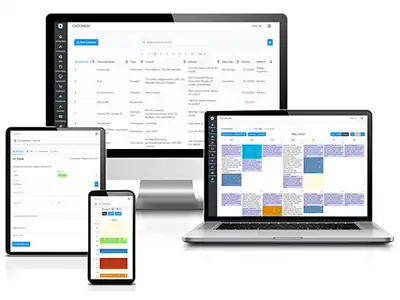
The world of service technicians is evolving. Advancements in technology are reshaping the way these professionals work. From mobile devices to cloud computing, new tools are enhancing efficiency and effectiveness. They're not just changing how service techs operate, but also the services they can offer.
This article explores these technological advancements. It delves into how they're impacting the roles and capabilities of service technicians, also known as field service technicians or service techs.
Whether you're a service technician, a field service management professional, or a business that employs these professionals, this comprehensive overview is for you. Stay tuned to learn how technology is revolutionizing the field service industry.
The Evolving Role of Service Technicians
Service technicians play a crucial role in various industries. They're responsible for installing, maintaining, and repairing equipment. Their work often involves troubleshooting complex systems and ensuring they function optimally. However, the role of service technicians is changing.
Traditional Tools vs. Modern Solutions
Traditionally, service techs relied on manual tools and paper-based processes. They used physical manuals for reference and communicated via phone calls or face-to-face meetings. These methods, while effective, had their limitations.
- They were time-consuming.
- They lacked real-time updates.
- They were prone to human error.
Today, technology offers modern solutions that address these challenges. Digital tools and software are transforming the way service techs work. They're enabling real-time communication, instant access to information, and automated processes. These advancements are not only improving efficiency but also enhancing the quality of service. In the following sections, we'll delve into these technological advancements and their impact on service technicians.
Impact of Mobile Technology on Service Techs
Mobile technology has revolutionized the way service technicians work. Smartphones and tablets serve as portable workstations, providing access to a wealth of information at their fingertips. These devices are equipped with apps and software designed specifically for service techs.

Real-Time Communication and Information Access
With mobile technology, service techs can communicate in real-time. They can receive updates, share reports, and consult with colleagues on the go. This instant communication reduces downtime and speeds up service delivery. Moreover, mobile devices provide access to a vast array of information. Service techs can view digital manuals, watch instructional videos, and even access customer history and preferences. This wealth of information aids in troubleshooting and enhances the quality of service.
Software Advancements for Service Technicians
The advent of specialized software has significantly improved the efficiency of service technicians. These software solutions are designed to streamline various aspects of a service tech's job. From scheduling and dispatch to jobs management, these tools automate routine tasks. This automation reduces the risk of human error and allows service techs to focus on their core tasks.
Moreover, these software solutions provide valuable insights through data analytics. These insights can help service businesses optimize their operations and improve customer satisfaction.
Scheduling, Dispatch, and Job Tracking
One of the key benefits of service technician software is improved scheduling and dispatch. These tools allow for efficient allocation of tasks based on technician availability, skill set, and location. This results in reduced travel time and faster response to service calls.
Moreover, these software solutions provide real-time tracking of jobs. Service managers can monitor the progress of tasks, identify bottlenecks, and ensure timely completion. This level of visibility enhances accountability and improves overall service delivery.
Cloud Computing and Data Management
Cloud computing has revolutionized data management for service technicians. It provides a centralized platform for storing and accessing data from any location. This means that service techs can access job details, customer information, and technical manuals on the go. Moreover, cloud computing enables real-time updates, ensuring that all team members have access to the latest information.
Collaboration and Remote Work
Cloud-based platforms also facilitate collaboration among service techs. They can share information, discuss complex issues, and seek advice from their peers. This collaborative approach can significantly improve problem-solving and decision-making.
Moreover, cloud computing supports remote work. Service techs can complete administrative tasks from home or on the road, reducing the need for office visits. This flexibility can improve work-life balance and increase job satisfaction among service technicians.
IoT and Predictive Maintenance
The Internet of Things (IoT) is transforming the way service technicians work. IoT devices can monitor equipment performance and detect potential issues before they become serious problems. This predictive maintenance approach can prevent equipment downtime and save costs.

Moreover, IoT devices can collect valuable data about equipment usage and performance. This data can be analyzed to optimize maintenance schedules and improve equipment lifespan. In essence, IoT is enabling a more proactive and data-driven approach to service management.
Remote Diagnostics and Proactive Service
IoT also supports remote diagnostics. Service techs can monitor equipment remotely and diagnose issues without having to visit the site. This capability can significantly reduce response times and improve customer satisfaction.
Moreover, remote diagnostics can enable service techs to prepare for on-site visits more effectively. They can identify the tools and parts needed in advance, increasing the chances of resolving the issue in the first visit.
AI and Decision-Making in Field Service
Artificial Intelligence (AI) is another technological advancement impacting service technicians. AI can analyze vast amounts of data to provide insights and recommendations. This capability can support decision-making in various aspects of field service management. For instance, AI can help in scheduling and dispatching by identifying the most efficient routes and assigning tasks based on technicians' skills and availability.
AI can also support predictive maintenance by analyzing equipment data and predicting potential failures. In essence, AI is enhancing the efficiency and effectiveness of service technicians.
Enhanced Customer Service through AI
AI can also play a significant role in improving customer service. AI-powered chatbots, for instance, can provide instant responses to customer queries, improving customer satisfaction.
Moreover, AI can analyze customer feedback and identify areas for improvement. This capability can help service businesses to continuously improve their service quality and meet customer expectations.
AR and VR for Training and Assistance
Augmented Reality (AR) and Virtual Reality (VR) are transforming the way service technicians are trained and assisted on the job. AR overlays digital information onto the physical world, providing technicians with real-time guidance during repairs or maintenance tasks. On the other hand, VR immerses technicians in a simulated environment, allowing them to practice and hone their skills without the risks associated with real-world scenarios.
Case Studies: AR/VR in Action
Several companies have successfully integrated AR and VR into their service operations. For instance, some companies use AR to guide technicians through complex repairs, reducing errors and improving efficiency. Others use VR for safety training, allowing technicians to experience potentially dangerous situations in a controlled environment. These case studies highlight the potential of AR and VR in enhancing the capabilities of service technicians.
Cybersecurity and Data Privacy for Service Techs
As service technicians increasingly rely on digital tools and platforms, cybersecurity and data privacy have become paramount. Technicians often handle sensitive customer data, making them potential targets for cyber threats.
Protecting Sensitive Information
To protect this sensitive information, businesses are investing in secure software and training technicians on best practices for data handling. Moreover, compliance with data protection regulations, such as GDPR, is crucial to avoid hefty fines and maintain customer trust.
Conclusion: Preparing for the Future
The role of service technicians is evolving rapidly due to technological advancements. These changes present both challenges and opportunities for service techs and the businesses they support.
Continuous Learning and Upskilling
To keep pace with these changes, continuous learning and upskilling are essential. Service technicians must be willing to adapt and learn new technologies to stay relevant in their field. Similarly, businesses must invest in training and development to equip their technicians with the necessary skills and tools to leverage these advancements effectively.
